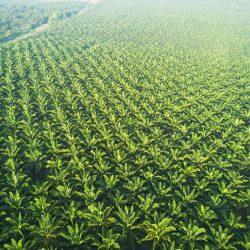Palm oil to blame for 39% of forest loss in Borneo since 2000

The palm oil industry was responsible for at least 39% of forest loss on the biodiversity-rich island of Borneo between 2000 and 2018, data from a research firm based in Indonesia shows.
The data comes as forest clearance fires in Borneo and parts of Indonesia spread smog across Southeast Asia, causing air quality to drop to unhealthy levels in neighbouring Singapore and Malaysia.
Some palm oil farmers have been accused of using slash-and-burn methods to clear land for planting. The palm oil industry has long been blamed for encroaching on rain forests in Borneo, endangering wildlife such as orangutans and pygmy elephants.
Borneo, shared by Brunei and top palm oil producers Indonesia and Malaysia, lost 6.3 million hectares (15 million acres) of forest cover between 2000 and 2018, the data from the Center for International Forestry Research (CIFOR), shows.
“This is a conservative number,” David Gaveau, a climate scientist at CIFOR, told Reuters of the data, published this month via the centre’s Borneo Atlas tool. “It does not include all forest areas impacted by plantation development.”
Palm oil companies accounted for about 2.4 million hectares (6 million acres) of the loss while pulpwood firms accounted for 461,319 hectares (1.1 million acres).
Palm oil was responsible for 35% of forest loss in the Indonesian part of Borneo, and 46% on the Malaysian side.
Indonesia and Malaysia produce about 85% of the world’s palm oil, which is used in everything from soaps, lipstick to pizza and biodiesel.
CIFOR determined the amount of deforestation caused by companies by calculating the area of forest cleared and converted to industrial plantations within the same year.
The data does not include plantations farmed by smallholders, who account for 40% of palm oil production globally, industry estimates show.
Gaveau said the conversion from forest area to plantations has slowed since 2012, because of lower prices for palm oil and Indonesia’s bans on new plantations.
The forest loss from expansion of palm oil plantations fell to 22% last year, from 28.5% the previous year, the data showed.
A spokeswoman for Malaysia’s ministry in charge of palm oil said the government had adopted policies to cap oil palm cultivation area at 6.5 million hectares (16 million acres).
The country’s total area planted with oil palm amounted to about 5.8 million hectares (14 million acres) by 2018.
The government also plans to end conversion of forest reserves to palm oil plantations, the spokeswoman said.
A spokesman of the Indonesian Palm Oil Association (GAPKI), said palm plantations were developed in areas outside forests, but pointed to differences in the areas provinces set aside for development and those reserved for forest.
“Uncertainty of spatial planning at the province level is a source of legal uncertainty in palm plantation business,” said Tofan Mahdi, the spokesman.
Officials of Indonesia’s agriculture ministry declined to comment, while forestry officials did not immediately respond to requests for comment.
Source: Reuters


